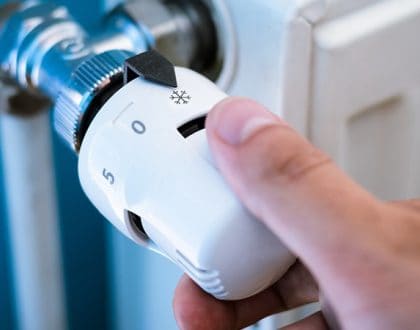How to Reduce Heat Loss in Your Home

Effective Strategies to Reduce Heat Loss in Your Home
From May till August, running your home can seem like a breeze. But when the nights draw in and temperatures drop, that breeze soon turns into a chill. The solution? Turn on the heating, of course.
Unfortunately, if your home is suffering from heat loss, the warmth from fires and radiators can easily escape, resulting in fluctuating temperatures and soaring bills.
So, what’s the solution? Fortunately, there are ways to stop heat loss. Read on for some simple tips, tricks and fixes that can improve your home’s heat retention.
1. Roof and loft insulation
Anyone who has studied high school science will know that heat rises. That’s exactly what it does in your home, and it will continue rising if there’s nothing there to stop it. The Energy Saving Trust estimates that a quarter of any home’s heat is lost through the roof if it’s left uninsulated.
That’s potentially an extra 25% on your heating bills. Needless to say, loft and roof insulation will pay for itself over time, with well installed insulation lasting for a minimum of 40 years.
2. Insulating walls
It’s not just the top of the home that lets heat escape – walls can be at fault too. As well as travelling upwards, heat is naturally drawn to colder areas. In winter, that’s the exterior of your home – as well as any cold, unheated rooms. To prevent this, wall insulation comes in two forms, for the two main types of wall – cavity walls and solid walls.
- Cavity walls comprise two layers with a cavity in between. This cavity acts as an insulative layer, meaning cavity walls – by design – are better insulators than solid walls. However, this can be further improved by filling the cavity with insulative materials such as mineral wool or polyurethane foam. This maintains the cavity, but improves its efficacy.
- So, how about solid walls? The process is less straightforward – and costs more as a consequence. Insulative material is attached to the outside of a home’s walls, as opposed to being simply injected into the cavity of a wall. However, it will also save you more on your heating bills. Solid wall insulation is expected to save £255 on average for a semi-detached home, with £160 for a mid-terrace and £425 for detached properties.
3. Closing the door on the cold
Leaving doors open is a sure-fire way to let heat out of your home. But even if you’re vigilant in keeping them closed, they can still let heat seep out and replace it with a cold draught from outside. Draught-proofing doors will make a noticeable improvement to your home and won’t break the bank.
Keyhole covers, letterbox brushes and brush or cushion draught excluders at the bottom of the door cost just a few pounds and can stop the constant stream of cold air into your home. You can also buy wiper seals to ensure no air is getting through gaps at the edges of your door.
4. Moving onto windows
Another problem area for many homes are the windows. Gaps in window sealing can allow air through as well as causing an annoying whistling noise. Again, DIY draught-proofing can improve the situation. Self-adhesive strips can be applied around the window to stop the air coming through.
However, for some windows the problem is a bit trickier. Single glazed windows only have one pane of glass, which becomes cold from the outside and easily transfers in. This draws heat out of your home as well as causing condensation to build up on windows.
Investing in some thick, thermal curtains is one way to tackle the problem, adding a layer of insulation between the room and the window recess. If you’re looking for a more permanent solution – and one that tackles condensation too – consider double or secondary glazing for your home.
5. Efficient heating
All of the above points focus broadly on stopping heat from escaping your home after it has warmed up. But what about the heating itself? Radiators and fires have certain design downfalls that can stop them from heating your home properly.
Fireplaces need a chimney to remove waste gases. However, this also means a lot of heat is lost through the chimney. Stove fans and blowers can prevent this. They are specially designed to push hot air out from the fire, with some also drawing in cold air from the room.
Radiators also lose heat but in a much different way. Because they are attached to the wall, some of their heat goes straight into the wall. This might not be a problem if you have cavity or solid wall insulation, as it will still be kept in the home. But for uninsulated walls, the heat will be lost. Specialist radiator foil – or even just tin foil – can be purchased to fit behind your radiators, which will keep the heat in.
How can we help?
If you’re looking to improve your home’s heat retention, windows are a good place to start. At Clearview, we provide secondary glazing for private and commercial properties across the UK – including those with heritage or listed status. Our bespoke secondary glazing can improve the insulation of your windows, keeping more heat in your home and reducing your energy bills in the long run. Get your free, no-obligation quote today.

Discover How To Stop Draughts for Good And Save On Your Energy Bills
This free eGuide – written by specialists – explains in simple terms how to improve the thermal efficiency of your windows by more than 60% and how you can reduce your yearly heating bill by 15%.
Simply enter your name and email below and we will send a free copy straight to your inbox.

 10 Year Guarantee
10 Year Guarantee 5 Star Customer Reviews
5 Star Customer Reviews

